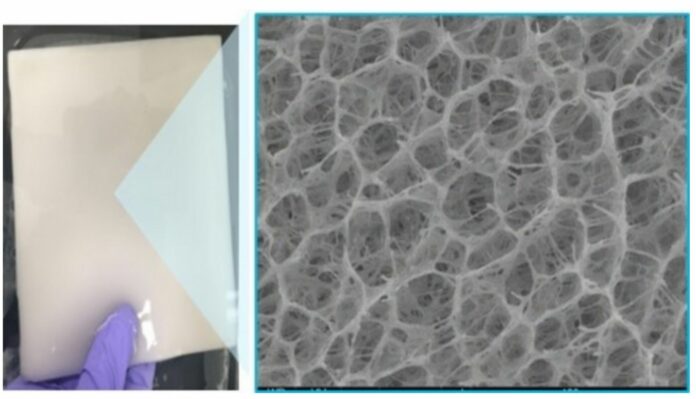As the number of humans grows and pollution affects freshwater sources, access to clean water is becoming more and more difficult.
Current devices under development for cleaning unclean water with sunlight can only create a few liters of water each day.
However, in ACS Central Science, researchers describe how loofah sponges inspired a sunlight-powered porous hydrogel that may possibly filter enough water to meet someone’s daily requirements — even when it’s cloudy.
Researchers have previously hypothesized that sunlight-driven evaporation would be a low-energy method to filter water, however, this strategy fails when it’s cloudy.
Temperature-responsive hydrogels, in particular poly(N-isopropyl acrylamide) (PNIPAm), which transition from absorbing water to rejecting it when heated, may provide one option.
However, due to their closed-off pores, standard PNIPAm gels are unable to produce clean water quickly enough to fulfil people’s daily demands.
Natural loofahs, on the other hand, which many people use to exfoliate in the shower, have huge, open, and interconnected pores.
In order to create a material that could quickly absorb water at ambient temperature and quickly release purified water when heated by the sun’s rays in bright or overcast situations, Rodney Priestley, Xiaohui Xu, and colleagues sought to duplicate the structure of the loofah in a PNIPAm-based hydrogel.
The researchers created a PNIPAm hydrogel with an open pore structure, comparable to natural loofah, using a water and ethylene glycol combination as a novel polymerization medium.
The inside pores of the opaque hydrogel were then coated with polydopamine (PDA) and poly(sulfobetaine methacrylate) (PSMBA), and the material was tested with an artificial light comparable to the power of the sun.
When heated by artificial light, it absorbed water at ambient temperature and released 70% of that water in 10 minutes, which is a pace four times faster than that of a previously reported absorber gel.
According to the experts, at this speed, the material has the ability to satisfy a person’s daily requirement. Additionally, it took 15 to 20 minutes for the material to release a comparable quantity of held water under reduced lighting circumstances that replicated partially overcast sky.
Finally, samples contaminated with organic colors, heavy metals, oil, and microplastics were used to evaluate the novel loofah-like material. In every test, the gel significantly improved the water’s cleanliness.
For instance, water samples containing around 40 parts per million (ppm) of chromium were treated twice, absorbed, and discharged with less than 0.07 ppm of chromium, which is the permitted level for drinking water.
The distinctive hydrogel structure that the researchers developed may be valuable in other applications, including medication delivery, smart sensors, and chemical separations, according to the researchers.
Source: 10.1021/acscentsci.2c01245
